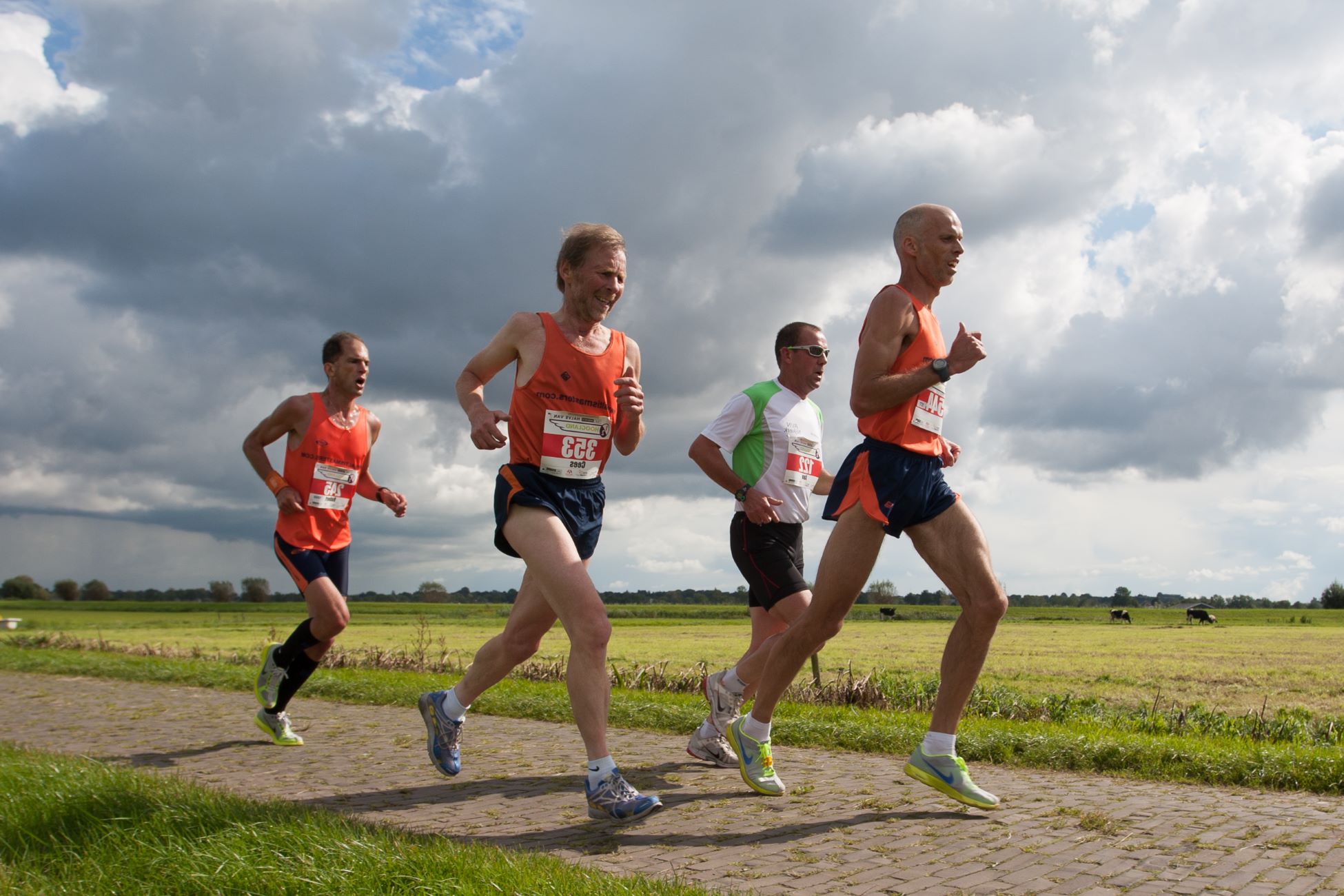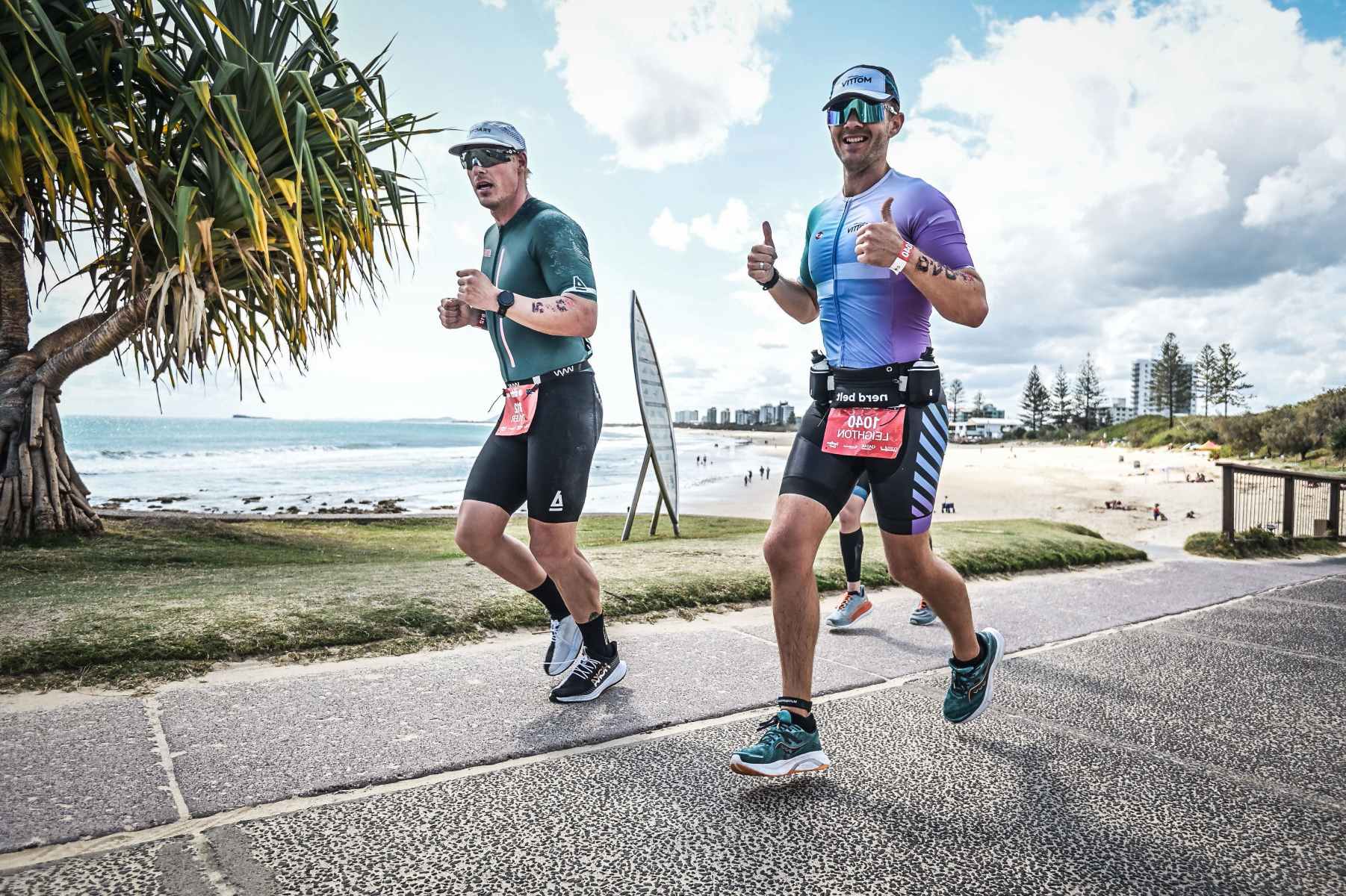Home>Races & Events>Dos And Don’ts For Race Day


Races & Events
Dos And Don’ts For Race Day
Published: February 28, 2024
Discover essential dos and don'ts for race day to ensure a successful and enjoyable experience. Get expert tips and advice for races and events.
(Many of the links in this article redirect to a specific reviewed product. Your purchase of these products through affiliate links helps to generate commission for Therunningadvisor.com, at no extra cost. Learn more)
Table of Contents
Preparing for Race Day
Preparing for race day is crucial for a successful and enjoyable experience. Whether you're a seasoned runner or a first-time participant, proper preparation can make a significant difference in your performance and overall satisfaction with the event. Here are some essential dos and don'ts to consider as you get ready for the big day:
Dos:
-
Plan Your Training Schedule: Establish a well-structured training plan that includes a balance of running, cross-training, and rest days. Gradually increase your mileage and intensity to build endurance and prevent injuries.
-
Get Adequate Rest: Prioritize quality sleep in the days leading up to the race. Adequate rest is essential for muscle recovery and overall physical readiness.
-
Familiarize Yourself with the Course: If possible, review the race course beforehand. Understanding the terrain and any challenging segments can help you mentally prepare and strategize your approach.
-
Stay Hydrated: Proper hydration is key to optimal performance. Drink plenty of water in the days leading up to the race, and consider carrying a water bottle with you on race day.
-
Eat Well: Consume a balanced diet rich in carbohydrates, lean proteins, and healthy fats. Fuel your body with nutritious meals to support your training and race-day performance.
-
Pack Your Gear Ahead of Time: Lay out your race-day attire, including your running shoes, clothing, and any accessories you'll need. Double-check that everything is clean, comfortable, and in good condition.
Don'ts:
-
Don't Try Anything New: Race day is not the time to experiment with new gear, shoes, or nutrition. Stick to what you know works for you based on your training experience.
-
Avoid Overtraining: While consistency in training is essential, pushing yourself too hard in the days leading up to the race can lead to fatigue and potential injury. Taper your workouts as the event approaches.
-
Don't Skip Mental Preparation: Visualize yourself crossing the finish line and focus on positive affirmations. Mental preparation is just as important as physical readiness.
-
Avoid Excessive Stress: While some pre-race nerves are normal, excessive stress can hinder your performance. Practice relaxation techniques such as deep breathing or meditation to stay calm and focused.
-
Don't Forget to Check the Weather: Stay informed about the weather forecast for race day. This will help you make informed decisions about your attire and any additional gear you may need.
By following these dos and don'ts, you can set yourself up for a successful and fulfilling race day experience. Proper preparation will not only enhance your performance but also contribute to a positive and memorable event.
Nutrition and Hydration
Proper nutrition and hydration are fundamental aspects of race day preparation. The food and fluids you consume leading up to and during the event can significantly impact your performance and overall well-being. Here's a comprehensive guide to help you navigate the dos and don'ts of nutrition and hydration for race day.
Dos:
-
Hydrate Adequately: Begin hydrating well in advance of the race. Aim to drink plenty of water in the days leading up to the event to ensure that your body is well-hydrated. On race day, continue to drink water at regular intervals to maintain optimal hydration levels.
-
Carbohydrate Loading: Consider increasing your carbohydrate intake in the days leading up to the race. Carbohydrates serve as the primary fuel source for endurance activities, and loading up on complex carbs such as whole grains, fruits, and vegetables can help top up your glycogen stores for sustained energy during the race.
-
Balanced Pre-Race Meal: Consume a balanced meal rich in carbohydrates, moderate in protein, and low in fat a few hours before the race. Opt for easily digestible foods such as oatmeal, bananas, or whole-grain toast to provide a steady release of energy without causing digestive discomfort.
-
Electrolyte Replacement: During longer races, especially in hot or humid conditions, consider incorporating electrolyte-replacement drinks or gels to replenish essential minerals lost through sweat. This can help prevent dehydration and maintain proper muscle function.
-
Post-Race Rehydration and Refueling: After completing the race, prioritize rehydration and refueling. Drink water or a sports drink to replenish lost fluids, and consume a balanced meal containing carbohydrates and protein to support muscle recovery and replenish glycogen stores.
Don'ts:
-
Avoid Overeating: While it's important to fuel your body adequately, avoid overeating in the hours leading up to the race. Large or heavy meals can lead to discomfort and sluggishness during the event.
-
Limit High-Fat Foods: Steer clear of high-fat or greasy foods before the race, as they can be harder to digest and may lead to gastrointestinal distress during physical exertion.
-
Refrain from Experimenting: Race day is not the time to experiment with new foods or supplements. Stick to familiar, tried-and-tested options that you know work well with your digestive system and provide sustained energy.
-
Don't Rely Solely on Sports Drinks: While sports drinks can be beneficial for electrolyte replenishment during longer races, avoid relying solely on them for hydration. Water should still be a primary component of your fluid intake to maintain overall hydration.
By adhering to these guidelines for nutrition and hydration, you can optimize your body's readiness for the race and ensure that you have the energy and stamina needed to perform at your best. Remember that individual nutritional needs may vary, so it's essential to experiment with different strategies during training to determine what works best for you.
Warm-Up and Stretching
Proper warm-up and stretching routines are vital components of race day preparation, playing a crucial role in priming your body for the physical demands of the event. A well-executed warm-up not only enhances performance but also reduces the risk of injury during the race. Here's a detailed guide to the dos and don'ts of warm-up and stretching to help you optimize your race day readiness.
Dos:
-
Dynamic Warm-Up: Engage in dynamic movements that mimic the actions of running, such as high knees, leg swings, and arm circles. Dynamic warm-up exercises help increase blood flow to the muscles, improve flexibility, and prepare the body for the specific movements involved in running.
-
Gradual Intensity: Gradually increase the intensity of your warm-up to elevate your heart rate and body temperature. This gradual progression primes your cardiovascular system and muscles for the upcoming physical exertion, reducing the likelihood of sudden strain or fatigue.
-
Focus on Key Muscle Groups: Pay particular attention to warming up key muscle groups involved in running, including the quadriceps, hamstrings, calves, and hip flexors. Incorporate dynamic stretches and movements that target these areas to enhance flexibility and range of motion.
-
Mindful Stretching: Perform gentle, dynamic stretches that focus on lengthening and loosening the muscles without overstretching. Dynamic stretching helps improve muscle elasticity and joint mobility, promoting optimal muscle function during the race.
-
Mental Preparation: Use the warm-up period to mentally prepare for the race. Visualize your race strategy, set positive intentions, and focus on maintaining a relaxed and confident mindset as you prepare to start.
Don'ts:
-
Avoid Static Stretching: Refrain from static stretching during the warm-up phase. Static stretches, where you hold a position for an extended period, can actually decrease muscle elasticity and may hinder performance if performed before the race.
-
Don't Rush the Warm-Up: Allow sufficient time for a thorough warm-up routine. Rushing through the warm-up can lead to inadequate preparation and may increase the risk of muscle strain or injury during the race.
-
Avoid Overexertion: While it's important to elevate your heart rate and body temperature, avoid pushing yourself to the point of fatigue during the warm-up. The goal is to prepare the body, not to exhaust it before the race even begins.
-
Don't Neglect Mental Focus: Use the warm-up period as an opportunity to mentally focus on the task ahead. Avoid distractions and unnecessary stressors, and instead, channel your energy towards positive and confident thoughts.
By incorporating these dos and don'ts into your warm-up and stretching routine, you can optimize your physical and mental readiness for the race. A well-executed warm-up sets the stage for a strong and resilient performance, allowing you to fully embrace the challenges and rewards of race day.
Race Day Attire
Race day attire plays a pivotal role in ensuring comfort, performance, and protection from the elements. The right clothing and gear can make a substantial difference in your overall race day experience. Here's a comprehensive guide to help you navigate the dos and don'ts of race day attire.
Dos:
-
Moisture-Wicking Fabrics: Opt for clothing made from moisture-wicking fabrics that effectively draw sweat away from the skin. This helps in maintaining body temperature and reduces the likelihood of chafing, keeping you dry and comfortable throughout the race.
-
Proper Footwear: Select running shoes that have been broken in and are suitable for the race distance and terrain. It's essential to choose footwear that provides adequate support, cushioning, and traction to minimize the risk of blisters and injuries.
-
Weather-Appropriate Clothing: Dress according to the weather conditions expected on race day. In colder temperatures, layering can help regulate body temperature, while in hot weather, lightweight and breathable clothing is essential to prevent overheating.
-
Sun Protection: If the race takes place in sunny conditions, don't forget to apply sunscreen and consider wearing a cap or visor to shield your face from the sun. Protecting yourself from harmful UV rays is crucial for long-term skin health.
-
Race Bib Placement: Ensure that your race bib is securely fastened to your attire, preferably on the front of your shirt or shorts. This allows for easy identification and timing accuracy during the race.
Don'ts:
-
Avoid Cotton Clothing: Steer clear of cotton clothing, as it tends to retain moisture and can lead to discomfort and chafing, particularly during longer races. Opt for technical fabrics designed for athletic performance.
-
Say No to New Gear: Race day is not the time to debut new clothing or gear. Stick to attire and accessories that you have worn and tested during your training runs to avoid unexpected discomfort or performance issues.
-
Overdressing: While it's important to dress appropriately for the weather, avoid overdressing, as excessive layers can lead to overheating and excessive sweating, potentially impacting your performance and comfort.
-
Unsuitable Accessories: Refrain from wearing accessories or gear that may hinder your movement or cause distractions during the race. Choose lightweight, non-restrictive accessories that serve a practical purpose without impeding your performance.
By adhering to these guidelines for race day attire, you can ensure that your clothing and gear contribute to a positive and successful race day experience. Prioritize comfort, functionality, and weather-appropriate choices to optimize your performance and enjoyment throughout the event.
Race Day Etiquette
Race day etiquette encompasses a set of unspoken rules and practices that contribute to a positive and respectful racing environment for all participants. Observing proper race day etiquette not only enhances the experience for yourself but also fosters a sense of camaraderie and mutual support among fellow runners. Here's a detailed exploration of the essential dos and don'ts of race day etiquette to ensure a harmonious and enjoyable event for everyone involved.
Dos:
-
Respect Fellow Runners: Show consideration and respect for other participants, regardless of their pace or experience level. Offer words of encouragement and support to fellow runners, fostering a spirit of camaraderie and unity throughout the race.
-
Follow Course Guidelines: Adhere to the designated course and follow the instructions provided by race officials and volunteers. Stay within the designated lanes or routes, and avoid cutting corners or taking shortcuts that may compromise the integrity of the race.
-
Mindful Overtaking: When overtaking other runners, do so with caution and courtesy. Signal your intention to pass, and ensure that there is ample space to maneuver without disrupting the flow of other participants.
-
Express Gratitude: Show appreciation to volunteers, race organizers, and spectators who contribute to the smooth execution of the event. A simple "thank you" or a nod of acknowledgment goes a long way in recognizing their efforts.
-
Dispose of Waste Responsibly: If you use disposable water cups or energy gel packets during the race, make an effort to discard them in designated trash receptacles or disposal areas. Avoid littering the race course and help maintain a clean and orderly environment for all participants.
Don'ts:
-
Avoid Blocking Pathways: Be mindful of your positioning and avoid abruptly stopping in the middle of the course, especially in crowded areas. If you need to stop or walk, move to the side to allow other runners to pass without obstruction.
-
Refrain from External Distractions: Minimize the use of personal devices such as headphones or earbuds that may hinder your awareness of the surrounding environment. Remaining attentive to fellow runners, race officials, and course conditions is essential for safety and mutual consideration.
-
Respect Race Regulations: Refrain from deviating from the established race rules and guidelines. This includes refraining from unauthorized pacing by cyclists or outside assistance from non-participants, ensuring fair and equitable conditions for all runners.
-
Avoid Disruptive Behavior: Refrain from engaging in disruptive or unsportsmanlike conduct during the race. This includes verbal or physical altercations, as well as any behavior that may compromise the safety and well-being of others.
By upholding these principles of race day etiquette, you contribute to a positive and inclusive racing environment, where all participants can pursue their goals with mutual respect and consideration. Embracing these dos and don'ts fosters a culture of sportsmanship and unity, enriching the collective experience of the race for everyone involved.
Mental Preparation
Mental preparation is a critical component of race day readiness, often wielding a profound influence on an individual's performance and overall experience. The mindset that a runner adopts leading up to and during the race can significantly impact their ability to overcome challenges, maintain focus, and ultimately achieve their goals. Here's a comprehensive exploration of the dos and don'ts of mental preparation to help runners cultivate a resilient and positive mindset for race day.
Dos:
-
Visualization and Positive Affirmations: Engage in visualization exercises where you vividly imagine yourself successfully navigating the race course, crossing the finish line with strength and determination. Pair this with positive affirmations, such as "I am strong," "I am capable," and "I can overcome any challenge," to reinforce a confident and resilient mindset.
-
Goal Setting and Focus: Set clear, achievable goals for the race and maintain a laser-like focus on them. Whether it's achieving a personal best time, pacing oneself effectively, or simply enjoying the experience, having specific objectives helps channel mental energy towards meaningful outcomes.
-
Relaxation Techniques: Practice relaxation techniques such as deep breathing, progressive muscle relaxation, or mindfulness meditation to alleviate pre-race jitters and promote a calm and centered state of mind. Cultivating a sense of inner calm can enhance mental clarity and emotional resilience.
-
Adaptability and Positive Outlook: Embrace a flexible and adaptive mindset, acknowledging that race day conditions may not always align with expectations. Approach unforeseen challenges with a positive outlook, viewing them as opportunities for growth and learning rather than insurmountable obstacles.
Don'ts:
-
Avoid Negative Self-Talk: Refrain from engaging in self-defeating or negative self-talk. Instead of dwelling on doubts or fears, consciously redirect your thoughts towards empowering and constructive narratives that bolster confidence and self-belief.
-
Steer Clear of Comparisons: Resist the urge to compare yourself to other runners or fixate on external competition. Focus on your individual journey, progress, and aspirations, recognizing that each participant has their own unique path and motivations.
-
Limit Overthinking: Avoid excessive rumination or overthinking about the race, as this can lead to unnecessary stress and mental fatigue. Trust in your preparation and training, and strive to maintain a balanced perspective on the upcoming challenge.
-
Refrain from Dwelling on Mistakes: If you encounter setbacks or make errors during the race, avoid fixating on them. Instead, view them as valuable learning experiences and opportunities for growth, allowing yourself to pivot and refocus on the present moment and the road ahead.
By integrating these dos and don'ts into their mental preparation, runners can cultivate a resilient and adaptive mindset that empowers them to navigate the complexities of race day with confidence, composure, and unwavering determination. Embracing the power of mental preparation can elevate the entire race day experience, fostering a sense of personal achievement and fulfillment that extends far beyond the finish line.
Post-Race Recovery
Post-race recovery is a crucial phase that directly impacts a runner's physical well-being and long-term performance. After crossing the finish line, it's essential to prioritize recovery strategies that facilitate muscle repair, replenish energy stores, and support overall recovery. Here's a comprehensive guide to post-race recovery, outlining the dos and don'ts to help runners navigate this essential phase with optimal care and consideration.
Dos:
-
Hydration and Nutrition: Rehydrate promptly with water or electrolyte-rich beverages to replenish fluids lost during the race. Consuming a balanced post-race meal containing carbohydrates and protein within the first 30-60 minutes after finishing is vital for muscle glycogen replenishment and tissue repair.
-
Gentle Stretching and Cool Down: Engage in gentle stretching exercises to promote muscle relaxation and flexibility. A brief cool-down period, such as a light walk or easy jog, can aid in gradually reducing heart rate and preventing blood pooling in the extremities.
-
Rest and Active Recovery: Prioritize adequate rest to allow the body to recuperate from the physical demands of the race. Incorporate low-impact activities such as swimming, cycling, or gentle yoga in the days following the race to promote circulation and aid in muscle recovery without imposing additional stress on the body.
-
Self-Care and Recovery Modalities: Utilize recovery modalities such as foam rolling, massage, or contrast water therapy (alternating between hot and cold water immersion) to alleviate muscle soreness and promote circulation. Embracing self-care practices, including adequate sleep and stress management, is integral to the overall recovery process.
-
Reflect and Celebrate: Take time to reflect on your race experience, acknowledging your accomplishments and the dedication invested in your training. Celebrate your achievements, regardless of the outcome, and use the race as a learning opportunity to inform and inspire your future endeavors.
Don'ts:
-
Avoid Immediate Strenuous Activity: Refrain from engaging in high-impact or strenuous activities immediately after the race. Allow your body sufficient time to recover before resuming intense training or racing efforts.
-
Neglecting Recovery Nutrition: Avoid neglecting post-race nutrition, as this can impede the body's ability to repair and rebuild muscle tissue. Prioritize nutrient-dense foods that support recovery and replenish essential vitamins and minerals.
-
Ignoring Signs of Injury or Fatigue: Pay attention to any lingering pain, discomfort, or signs of fatigue that may indicate potential injury. Ignoring these signals can exacerbate underlying issues and prolong the recovery process.
-
Overlooking Mental Recovery: Don't overlook the importance of mental recovery. Acknowledge and process any emotions or thoughts related to the race, and embrace a positive and forward-looking mindset as you transition into the post-race phase.
By embracing these dos and don'ts of post-race recovery, runners can optimize their physical and mental recuperation, setting the stage for continued progress and future achievements. Prioritizing comprehensive post-race recovery strategies not only supports immediate recovery but also contributes to sustained well-being and performance in the long run.












